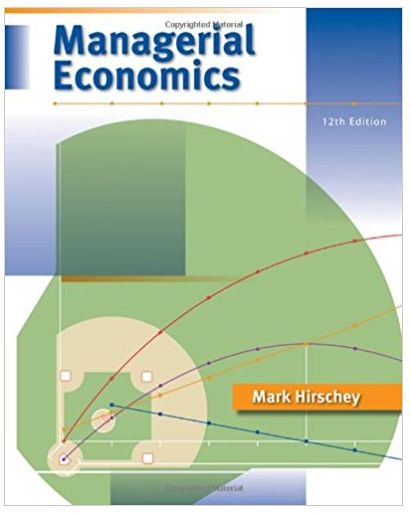A. Use your knowledge of monopoly pricing practices to explain why advertising rates and newspaper circulation prices
Question:
B. Classified ads to sell real estate in a local newspaper can cost five to ten times as much as a similar ad used to announce a garage sale. Use your knowledge of price discrimination to explain how local newspaper monopolies generate enormous profits from selling classified advertising that varies in price according to the value of the item advertised.
C. Widely differing fares for business and vacation travelers on the same flight have led some to accuse the airlines of price discrimination. Do airline fare differences or local newspaper classified-ad rate differences provide stronger evidence of price discrimination?
On May 12, 2000, the two daily newspapers in Denver, Colorado, filed an application with the U.S. Department of Justice for approval of a joint operating arrangement. The application was filed by The E.W. Scripps Company, whose subsidiary, the Denver Publishing Company, published the Rocky Mountain News, and the MediaNews Group, Inc., whose subsidiary, the Denver Post Corporation, published the Denver Post. Under the proposed joint operating agreement, printing and commercial operations of both newspapers were to be handled by a new entity, the “Denver Newspaper Agency,” owned by the parties in equal shares. This type of joint operating agreement provides for the complete independence of the news and editorial departments of the two newspapers. The rationale for such an arrangement, as provided for under the Newspaper Preservation Act, is to preserve multiple independent editorial voices in towns and cities too small to support two or more newspapers. The act requires joint operating arrangements, such as that proposed by the Denver newspapers, to obtain the prior written consent of the attorney general of the United States in order to qualify for the antitrust exemption provided by the act.
Scripps initiated discussions for a joint operating agreement after determining that the News would probably fail without such an arrangement. In their petition to the Justice Department, the newspapers argued that the News had sustained $123 million in net operating losses while the financially stronger Post had reaped $200 million in profits during the 1990s. This was a crucial point in favor of the joint operating agreement application because the attorney general must find that one of the publications is a failing newspaper and that approval of the arrangement is necessary to maintain the independent editorial content of both newspapers. Like any business, newspapers cannot survive without a respectable bottom line. In commenting on the joint operating agreement application, Attorney General Janet Reno noted that Denver was one of only five major American cities still served by competing daily newspapers. The other four are Boston, Chicago, New York, and Washington, DC. Of course, these other four cities are not comparable in size to Denver; they are much bigger. None of those four cities can lay claim to two newspapers that are more or less equally matched and strive for the same audience. In fact, that there is not a single city in the United States that still supports two independently owned and evenly matched, high-quality newspapers that vie for the same broad base of readership.
Fantastic news! We've Found the answer you've been seeking!
Step by Step Answer:
Related Book For 

Question Posted:





